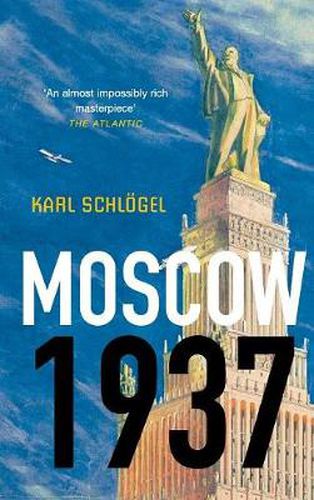Moscow, 1937
Karl Schlogel

Moscow, 1937
Karl Schlogel
Moscow, 1937: the soviet metropolis at the zenith of Stalin’s\ndictatorship. A society utterly wrecked by a hurricane of\nviolence.
\n
In this compelling book, the renowned historian Karl Schlögel\nreconstructs with meticulous care the process through which, month\nby month, the terrorism of a state-of-emergency regime spiraled\ninto the ‘Great Terror’ during which 1 ½ million human beings lost\ntheir lives within a single year. He revisits the sites of show\ntrials and executions and, by also consulting numerous sources from\nthe time, he provides a masterful panorama of these key events in\nRussian history.
\n
He shows how, in the shadow of the reign of terror, the regime\naround Stalin also aimed to construct a new society. Based on\ncountless documents, Schlögel’s historical masterpiece vividly\npresents an age in which the boundaries separating the dream and\nthe terror dissolve, and enables us to experience the fear that was\nfelt by people subjected to totalitarian rule. This rich and\nabsorbing account of the Soviet purges will be essential reading\nfor all students of Russia and for any readers interested in one of\nthe most dramatic and disturbing events of modern history.
\n\n
Review
[[karl-schl_gel-rev]]Instead of writing a narrative of this chaotic, momentous and pivotal year in the brief life of the USSR, or arguing a particular interpretation of events, Karl Schlögel is here attempting a sort of topography of the time. Influenced by Mikhail Bakhtin, he aims to capture the ‘synchronicity of the non-synchronous’. In doing so, he is implicitly arguing against the possibility of an overarching narrative, and counteracts any claims to see this year as somehow defining Soviet history, communism or even totalitarianism.
The picture Schlögel paints is one of unremitting and uncontrollable chaos, despite the best efforts of the regime. Moscow 20 years after the revolution was in the process of massive upheaval. In the previous 10 years it had almost doubled in population as a result of industrialisation and a massive influx from the countryside following famines and collectivisation.
With these came a period that turned Moscow into a perpetual building site, which saw the rapid construction of housing, factories and the Metro, the widening of streets and the demolition of whole blocks. The speed of modernisation, with the resources of the whole state behind it, meant the city could barely keep up with the needs of its own growth. Every new project created new jobs and required a greater labour force, which then needed housing, schooling, infrastructure and more projects.
The state’s ambitious social agenda was then educating and entertaining this new populace in equal measure. All of which added more stress on the regime: a version of history informed by Sheila Fitzpatick’s studies of social mobility under Stalinism, which identified an overwhelming upward pressure from below as the empowered masses of the revolution embraced the potential of the new state. To control this tidal wave of change, the revolution then begins to devour its own children.
This is a montage of a great city in tumult, in equal parts depicting the optimism of progress and the horror of the show trials, all in the shadow of a looming war. It explains the contradictory commentaries of those who were there by showing us and saying nothing.
Andrew Cornish is a friend of Readings.
This item is not currently in-stock. It can be ordered online and is expected to ship in 10-14 days
Our stock data is updated periodically, and availability may change throughout the day for in-demand items. Please call the relevant shop for the most current stock information. Prices are subject to change without notice.
Sign in or become a Readings Member to add this title to a wishlist.


